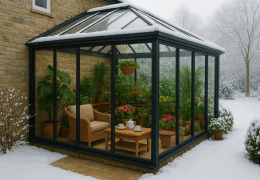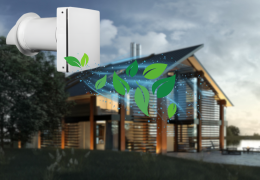Search in blog
Blog categories
Featured posts















Efficient plant irrigation is the key to a healthy and lush garden, vegetable garden or orchard. Thanks to increasing environmental awareness and the need to save water, modern automatic irrigation systems are gaining popularity. They make it possible to precisely deliver water exactly where it is needed, which not only saves valuable time, but also reduces water consumption and ensures optimal growth conditions for plants. How to take good care of garden irrigation?
It is a key element of garden care. Water is essential for photosynthesis, which allows plants to produce the energy they need to grow. In addition, proper irrigation helps maintain proper soil moisture levels, which is crucial for root health.
Inadequate irrigation can damage crops by:
Drying out plants - lack of water can cause wilting of leaves and, in extreme cases, plant death.
Overwatering plants - too much water can in turn lead to root rot and the development of fungal diseases.
Before irrigating, it's a good idea to know exactly what our plants' water needs are. Ornamental plants, vegetables, fruit bushes or lawns may require different amounts of water. Taking these differences into account will allow you to manage irrigation more efficiently. Divide them into groups where they will need a similar amount of water.
The best time to water plants is early morning, late afternoon and evening. Avoid watering in full sun, when water evaporates quickly and leaves can burn. The frequency of watering depends on the type of plants and weather conditions. In periods of drought, more frequent watering may be necessary.
Choosing the right irrigation system is crucial. Automatic irrigation systems with modern controllers and solar valves can make a gardener's life much easier. It's worth investing in a system that, along with the right sensors (such as soil moisture meters), will allow you to precisely adjust irrigation to the needs of your plants.

Planning smart watering of a garden, vegetable garden or orchard requires careful design that takes into account the specific needs of plants and efficient management of water resources. First of all, you need to identify areas with different water requirements and create irrigation zones that are tailored to specific groups of plants. The automatic irrigation project begins with the selection of appropriate technologies, such as drip systems, sprinklers or micro-sprinklers, which ensure precise delivery of water directly to plant roots. The next step is to install soil moisture sensors and a smart irrigation controller that will automatically adjust the timing and amount of sprinkling based on current weather conditions and plant needs. Selecting a smart controller allows you to remotely water plants, turn on/off or change the conditions for sprinkling. A smart water valve, which can also be controlled remotely, can also help. It is also important to consider the slope of the land and the layout of the paths to avoid water collection and soil erosion. Planning rainwater tanks and integrating them into the irrigation system will further save water and reduce costs. With a carefully designed automatic irrigation system, you can provide plants with optimal growing conditions while minimizing water consumption and labor associated with manual watering.
To save money on watering your plants, it's a good idea to use some practical strategies. First of all, collecting rainwater using barrels or tanks is an excellent way to have a free source of water. Rainwater is not only economical, but also more beneficial to plants, as it does not contain chlorine or other chemicals. Another method is to mulch the soil around the plants, which helps retain moisture and reduces evaporation. Choosing appropriate watering times, preferably in the early morning or late evening, also minimizes water loss due to high temperatures and sun. It's also worth investing in irrigation systems, such as drip irrigation, that deliver water directly to plant roots, reducing water consumption. Using devices that deliver water directly to the roots of plants, reducing water consumption. Optimizing watering by regularly checking the condition of the soil and adjusting watering frequency to current weather conditions will also help save water. With these simple steps, you can significantly reduce water consumption while providing the right conditions for plants to grow.
Integrating rainwater tanks into the irrigation system further supports an ecological approach to plant care. Remember that the key to success is to carefully plan irrigation zones according to the needs of different plants, and to regularly monitor and adjust system parameters. With these steps, you can enjoy a beautiful and healthy garden, vegetable garden or orchard throughout the season, while minimizing water waste and water-related costs.
Smart irrigation systems are modern solutions that automate the process of watering plants in the garden. Thanks to advanced technologies, such as soil moisture sensors, these systems adjust the amount of water according to the current needs of the plants, saving water and energy. They are controlled via a mobile app, which allows you to monitor and manage irrigation from anywhere.

 Jak dbać o bezpieczeństwo swojego domu?
Jak dbać o bezpieczeństwo swojego domu?
 Jak nie spuścić oka ze swojego dziecka?
Jak nie spuścić oka ze swojego dziecka?
 Co zrobić ze zwierzakiem domowym w wakacje?
Co zrobić ze zwierzakiem domowym w wakacje?
 OGRZEWANIE PODCZERWIENIĄ — czym jest i czy warto kupić promienniki?
OGRZEWANIE PODCZERWIENIĄ — czym jest i czy warto kupić promienniki?
 How to Protect Yourself from Carbon Monoxide Poisoning?
How to Protect Yourself from Carbon Monoxide Poisoning?


Leave a comment